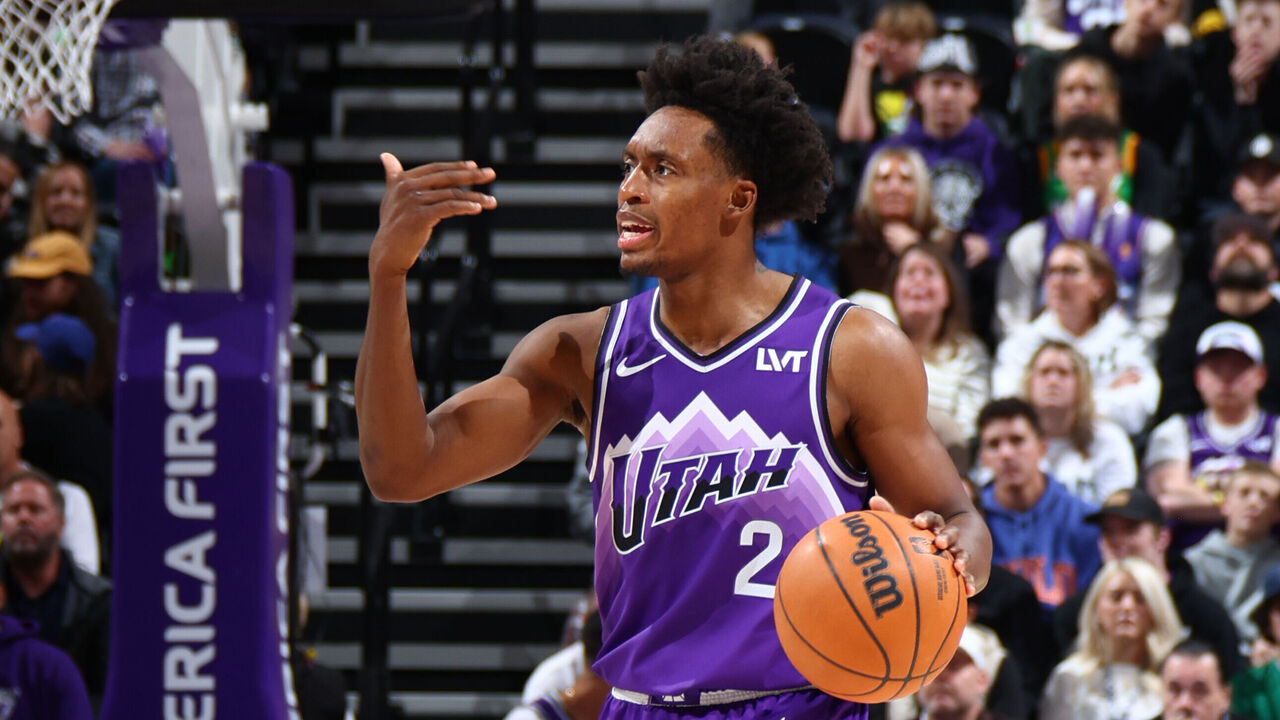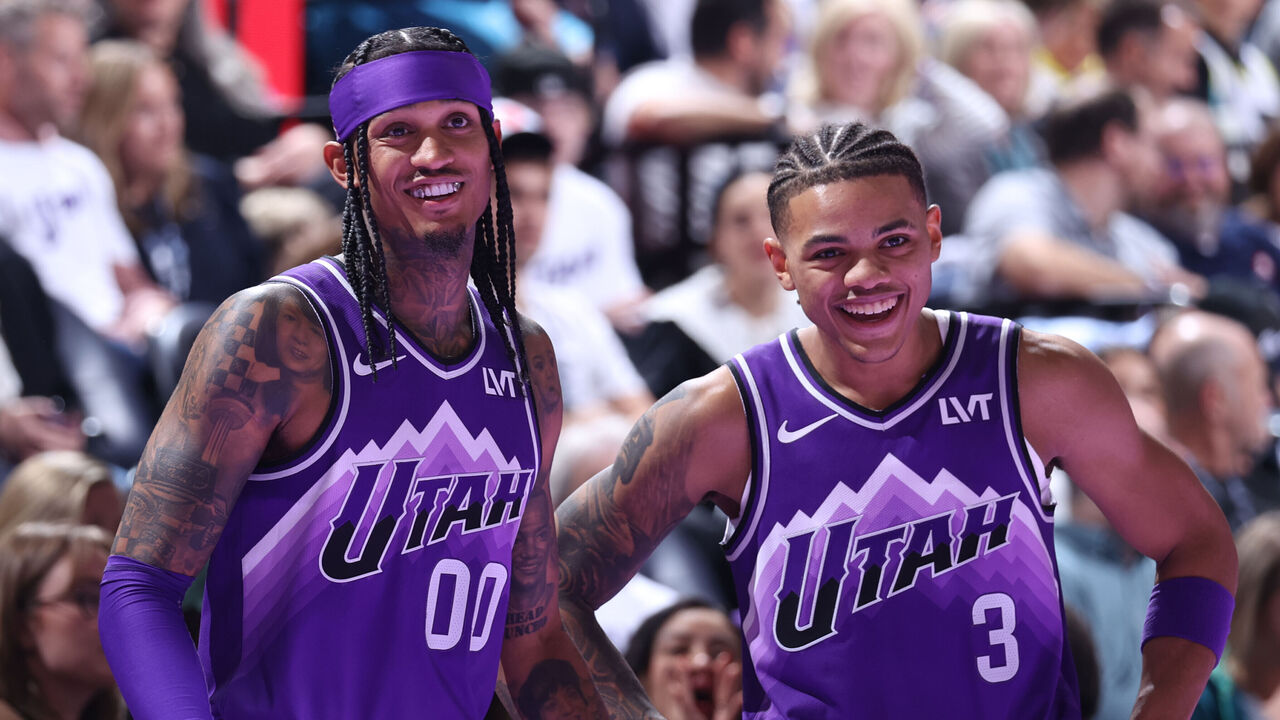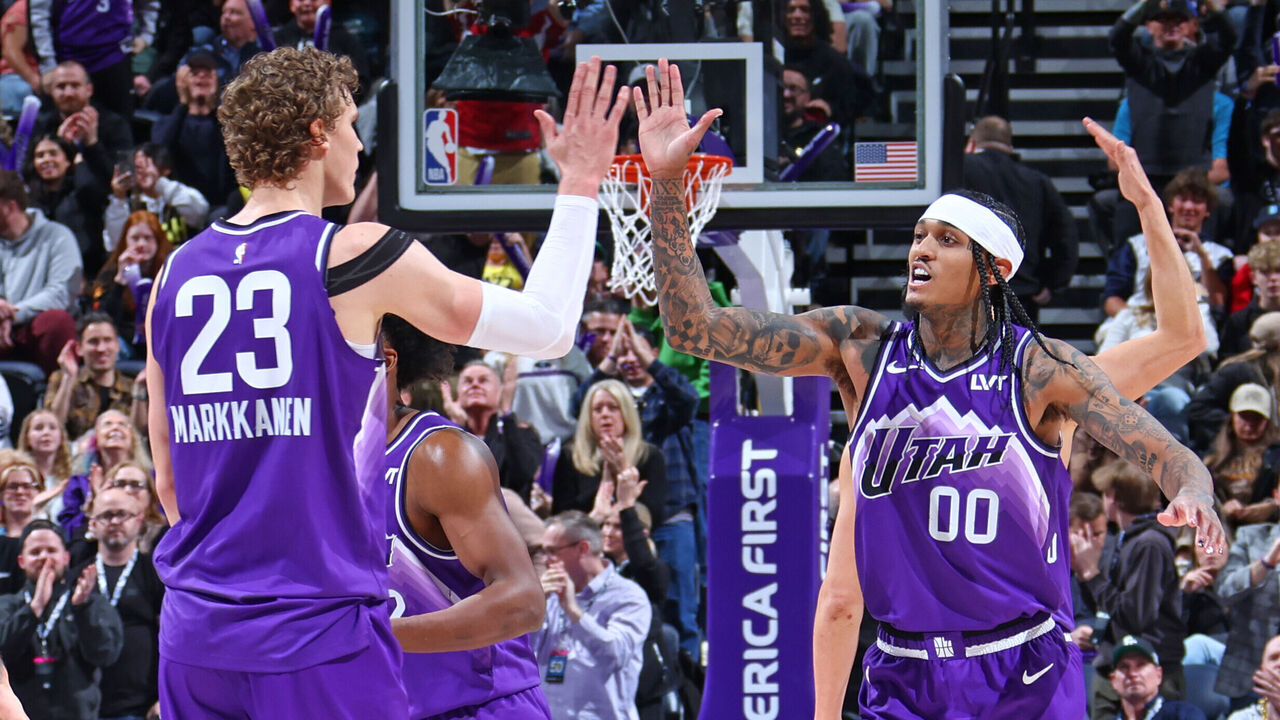The surging Jazz are trade season's ultimate wild card
The Utah Jazz clawing their way back into the Western Conference playoff race seemed preposterous a month ago.
With last year's second-half slide spilling over to the first quarter of the 2023-24 campaign, the Jazz were 7-16 and closer to the last-place Spurs (3.5 games) than they were to the West's final play-in spot (5.5 games). Since then, Utah has embarked on a shocking run; a stretch of superb play usually reserved for the NBA's inner circle of championship contenders.
Over a 20-game stretch that began with a Dec. 13 upset of the Knicks, the Jazz are 15-5 while outscoring opponents by an average of 7.2 points per contest. That gives Utah the league's third-best record and sixth-best point-differential over a quarter-season sample. Even more impressive, the team's elite stretch of play has coincided with an unforgiving portion of the schedule, as seven of those 15 wins have come against teams currently .500 or better.
There have been 524 instances in NBA regular-season history of a team facing an opponent with a .650+ win pct (min. 30 games played) in 3 consecutive games.
— OptaSTATS (@OptaSTATS) January 11, 2024
The @utahjazz are the only ones to win all 3 by double digits (beat 76ers by 11, Bucks by 16 & Nuggets by 13). pic.twitter.com/cp4npjyZsf
So what's behind the run that's propelled the Jazz to a winning record and the West's No. 9 seed? The answer is multi-faceted.
It's no coincidence that the Dec. 13 contest against New York marked All-Star Lauri Markkanen's return to the lineup after the Jazz forward had missed three weeks with a hamstring strain. Markkanen enjoyed one of the most stunning star turns in league history last season after being acquired as part of the blockbuster trade that sent Donovan Mitchell to the Cavaliers. Even after moving Mike Conley, Jarred Vanderbilt, and Malik Beasley ahead of last year's trade deadline, the seemingly overmatched Jazz still comfortably won Markkanen's minutes. So, it's no surprise Utah is thriving with its star in the lineup again.
After a slow, injury-disrupted start to the campaign, Markkanen now finds himself in the top 15 league-wide in win shares, with the Finnish power forward averaging 24.1 points on roughly 50-40-88 shooting. Markkanen has somehow upped his percentages inside the arc (59.6%), from deep (39.8%), and from the free-throw line (87.7%) this season while grabbing more rebounds (8.8 per game) than he's averaged in five years.
Markkanen is an undeniable offensive force, but there's more to Utah's midseason rise.

Few remember now, but when that 2022 deal between the Jazz and Cavs was struck, Collin Sexton (and a plethora of draft picks) was viewed as more of a centerpiece of Utah's return than Markkanen was, with Sexton agreeing to a four-year, $72-million contract as part of the trade. However, with a hamstring injury derailing his debut season in Salt Lake City after a torn meniscus ended his final year in Cleveland, Sexton found himself in the shadows, while Markkanen and youngster Ochai Agbaji - also acquired in the Mitchell trade - emerged as key components of Utah's rebuild.
After another uninspiring individual start to Sexton's 2023-24 season, no one could've predicted what was to come. Head coach Will Hardy inserted the 25-year-old into the starting lineup for Markkanen's return against the Knicks. To say Sexton has since repaid his coach's faith would be an understatement.
Sexton has been indomitable as a starter, showing Utah - and the basketball world at large - the potential and exciting brand of basketball that Cleveland dreamed of when it drafted him eighth overall in 2018.
Sexton looks rejuvenated as a starter, and his game looks refined. He's not dominating the ball quite as much as he did in Cleveland, but his off-ball work, catch-and-shoot prowess, and overall efficiency have teased the potential of a secondary star whose fit is more universal. Among 131 players who've attempted at least 100 catch-and-shoot 3-pointers this season, only Tyrese Maxey, Malik Beasley, and Norman Powell have converted at a higher rate than Sexton (47.6%).
The relentless guard, who earned the nickname "Young Bull," can still be a driving on-ball force, though. Just ask the Thunder, who nearly saw a 19-point lead in Utah evaporate Thursday, as Sexton became an unabated ball of energy down the stretch. At his frenetic best, it feels as though "Raging Bull" would be a more fitting moniker.
Joining Sexton in Hardy's new starting backcourt is Kris Dunn, an elite defensive guard whose offensive improvements in Utah have helped him re-establish his NBA career. Dunn spent time in the G League in each of the last two seasons, signed a 10-day contract with the Jazz last February, did enough to earn a multi-year offer from the team, and now starts in one of the West's most surprisingly dynamic backcourts.
With Sexton and Dunn starting, 2021 Sixth Man of the Year Jordan Clarkson is back to the role that suits him best, and he's once again thriving. After starting in 80 consecutive appearances over the last two seasons, Clarkson moved to the bench upon his Dec. 23 return from a thigh injury. Since then, the veteran guard has averaged 19.6 points and 5.4 assists while only playing about a minute per game less than he had been as a starter. When Clarkson returned to the bench, he joined a reserve unit that ranked 27th in net rating (minus-2.6 per 100 possessions). Since Clarkson took over that unit, Utah's bench ranks second (plus-5.9).

Hardy, whose innovative tactics have been praised by his peers, has now figured out how to structure his rotation and organize the team around Markkanen, Sexton, and Clarkson.
Without a third big man on the floor anymore, John Collins - acquired for virtually nothing (Rudy Gay and a 2026 second-rounder) last summer - looks like a cleaner fit in the same frontcourt as Markkanen. Sophomore center and defensive phenom Walker Kessler now anchors reserve units. Sweet-shooting Italian forward Simone Fontecchio provides spacing for the starters. Veteran big man Kelly Olynyk tutors a bench lineup that includes Agbaji and rookie guard Keyonte George. Talen Horton-Tucker has mercifully been excised from the rotation.
Now healthy and whole, the surging Jazz could throw a wrench into a West playoff race that suddenly sees teams with grander ambitions - like the remodeled Rockets and veteran Warriors - outside of play-in range. But what does Utah want, or rather what does a front office led by owner Ryan Smith, CEO Danny Ainge, and general manager Justin Zanik want? The answer to that question could change the trajectory of not only the Jazz but the NBA's hierarchy as a whole.
The team's direction in the second half of the season is as unpredictable as its first-half surge was. A month ago, it appeared all but certain the Jazz would be sellers ahead of the Feb. 8 trade deadline, with Clarkson, the expiring Olynyk, and even Dunn seen as the type of veterans Utah might be able to move for more picks. The last 20 games have muddied the waters.
After punting on the playoff race and trading core vets despite an encouraging start last season, can the Jazz sell the same big-picture strategy to their fans - and a player like Markkanen - again this year? Would they dare go a step further and trade Markkanen, himself?

Then there's the tantalizing possibility of the Jazz becoming buyers. Only the Thunder own more draft capital, and Utah should be cautious not to overlook the positive indicators from this quarter-season stretch or their general performance with Markkanen in the fold dating back to last year. The Jazz have something here, and they're in a unique position to add to it.
Sexton only turned 25 this month, and the $37.1 million total owed to him over the next two years suddenly seems like a bargain. Markkanen, Sexton, and Clarkson will combine to earn just $50.3 million next season, with Sexton and Clarkson combining for just $33.3 million against the cap in 2025-26. Meanwhile, Kessler, George, Agbaji, 2023 ninth overall pick Taylor Hendricks, and 28th pick Brice Sensabaugh are still on their rookie-scale contracts.
Teams as good as the Jazz have been over the last six weeks don't usually have the options and financial flexibility currently at Utah's disposal. The Jazz don't have to go all-in - and the sample size obviously has to be weighed - but they should think hard about whether they really want to sit this one out and watch from the sidelines again this spring.
Whichever path the Jazz choose, there is perhaps no team more unpredictable on the court, and no bigger wild card off of it, between now and the deadline.
Joseph Casciaro is theScore's senior content producer.